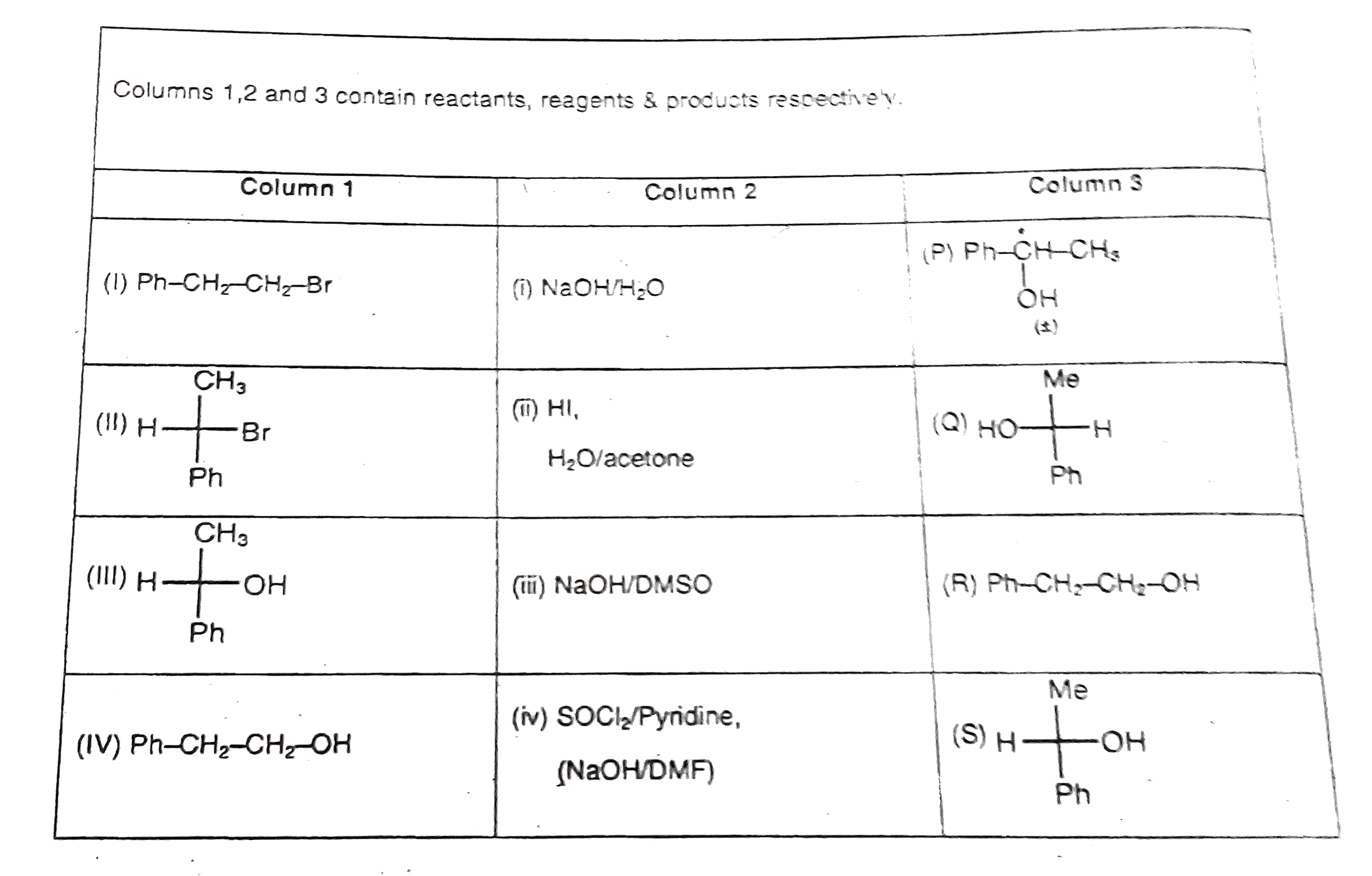tert-Butylbromide reacts with aq. NaOH by SN1 mechanism while n butylbromide reacts by SN2 mechanism. Why?
tert-Butyl readily loses Br− ion to form stable tert-butyl carbocation. Therefore, it undergoes reaction by SN1 mechanism which occurs in two steps. In the first step, tert-butyl carbocation is formed. This step is slow and hence is the rate determining step of the reaction. In the second step, the tert-butyl carbocation is readily attacked by OH− ion to form tert-butyl alcohol.

On the other hand, n-butyl bromide does not undergo ionization to produce n-butyl carbocation because it is not stable. Therefore, it prefers to undergo reaction by SN2 mechanism which occurs in one step through a transition state involving nucleophilic attack of the OH− ion from the back side with simultaneous expulsion of Br− ion from the front side.

Topper's Solved these Questions
- HALOALKANES AND HALOARENESBook:PRADEEPChapter:HALOALKANES AND HALOARENESExercise:NCERT EXEMPLAR PROBLEMS WITH ANSWERS, HINTS AND SOLUTIONS (MATCHING TYPE QUESTIONS)
Explore 15 Videos
- HALOALKANES AND HALOARENESBook:PRADEEPChapter:HALOALKANES AND HALOARENESExercise:NCERT EXEMPLAR PROBLEMS WITH ANSWERS, HINTS AND SOLUTIONS (Assertion and reason type questions)
Explore 1 Video
- HALOALKANES AND HALOARENESBook:PRADEEPChapter:HALOALKANES AND HALOARENESExercise:NCERT EXEMPLAR PROBLEMS WITH ANSWERS, HINTS AND SOLUTIONS (MULTIPLE CHOICE QUESTIONS-II)
Explore 11 Videos
- GENERAL PRINCIPLES AND PROCESSES OF ISOLATION OF ELEMENTS Book:PRADEEPChapter:GENERAL PRINCIPLES AND PROCESSES OF ISOLATION OF ELEMENTS Exercise:Curiosity Questions
Explore 2 Videos
- ORGANIC COMPOUNDS CONTAINING NITROGENBook:PRADEEPChapter:ORGANIC COMPOUNDS CONTAINING NITROGENExercise:IMPORTANT QUESTIONS FOR BOARD EXAMINATION
Explore 27 Videos
Similar Questions
Knowledge Check

Only SN1 mechanism is observed in :A(I)(i)(R)B(II)(iii)(P)C(IV)(ii)(S)D(III)(ii)(P)
SN2 mechanism is observed in :A(I)(iii)(R)B(IV)(iv)(R)C(II)(iii)(Q)DallFor SN1 mechanism which of the following is correct ?
AInversion (100 %)BFormation of carbocationCNon-polar solventDElimination
Explain why
(a) the dipole moment of chlorobenzene is lower than that of cyclohexyl chloride ?
(b) alkyl halides, though polar, are immiscible with water ?
(c) vinyl chloride is unreactive in nucleophilic substitution reactions ?
(d) neopentyl bromide undergoes nucleophilic substitution reactions very slowly ?
(e) 3-bromocyclohexane is more reactive than 4- bromocyclohexane in hydrolysis with aqueous NaOH ? (f) tert butyl chloride reacts with aqueous sodium hydroxide by SN1 mechanism while n-butyl chloride reacts by SN2 mechanism.
(g) Grignard reagents should be prepared under anhydrous conditions ?
View SolutionThe following will react faster by SN1 mechanism
View Solution
SN1+SN2 mixed mechanism is observed in the reaction
View SolutionWhich of the following reaction follows SN1 mechanism ?
View SolutionSN2 mechanism proceeds through formation of :
View Solution

